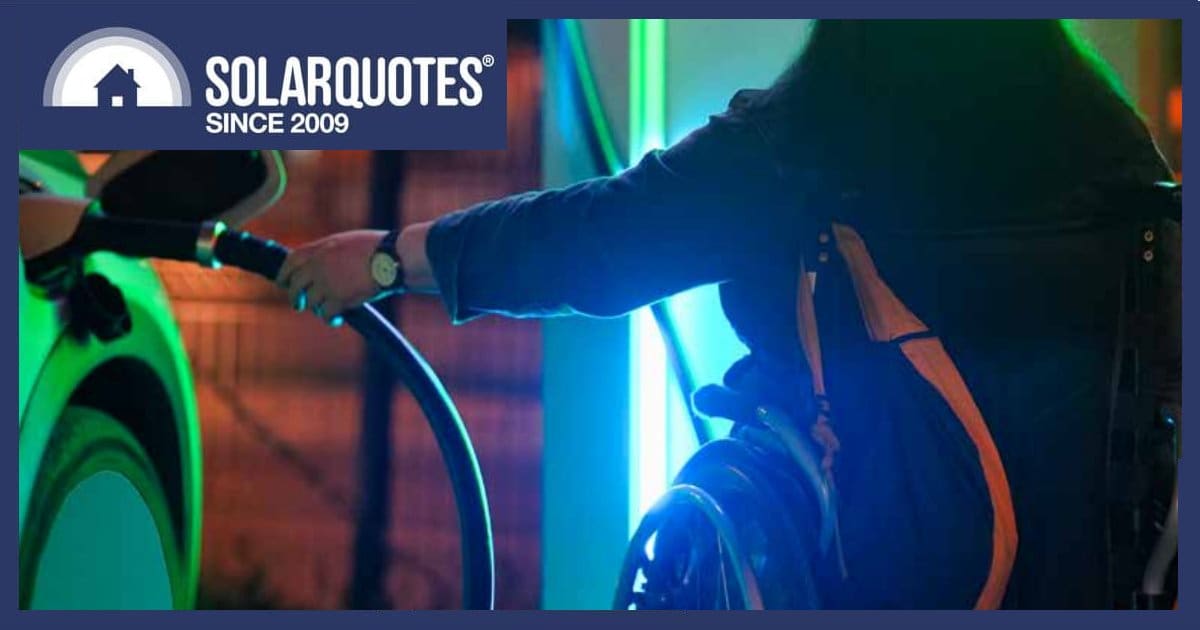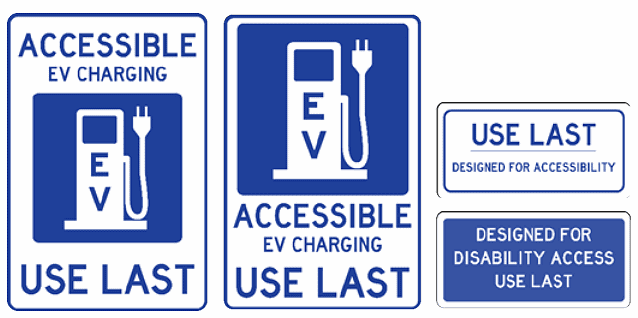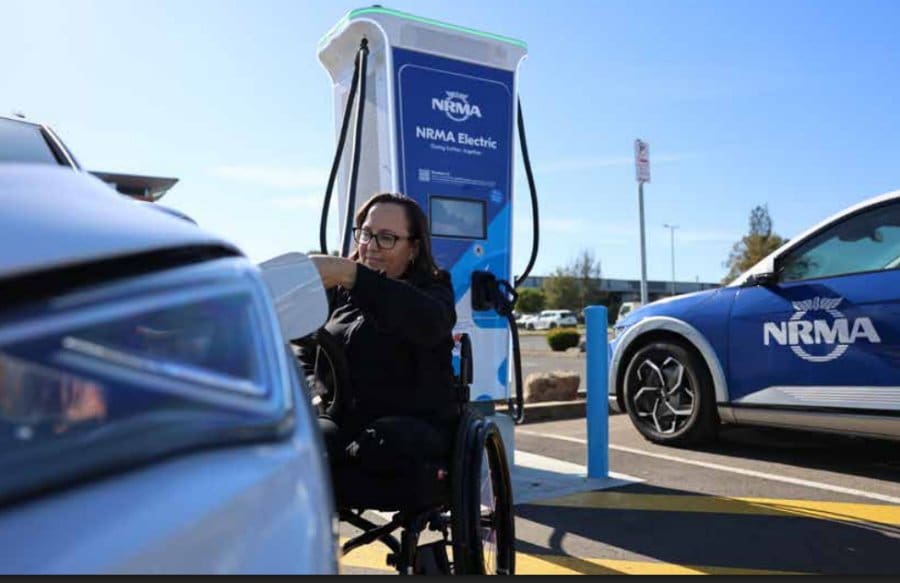

There is currently is no specific standard directly addressing accessibility requirements at public EV charging stations in Australia. NRMA says this needs to change.
By ‘accessibility’, the NRMA isn’t referring to pull-through bays for electric vehicle drivers towing a trailer, or the number of stations available. The organisation means ensuring equitable access for the many Australians with a disability.
While it’s not clear how many drivers hold an Australian Disability Parking Permit, in South Australia it’s around 70,000. SA has 1,381,957 licence holders according to state government statistics; so the proportion of drivers recognised as disabled is around 5%. There are around 19.4 million licensed drivers in Australia, so based on the SA proportion, that would be approximately 970,000 with a Disability Parking Permit.
Disabled drivers may be able to set up EV charging at home to suit their needs, but finding a public charger that does while out on the road can be another matter.
As things currently stand, there’s a piecemeal approach to charger accessibility issues across Australia. And while some state funding programs have an accessibility requirement1, others don’t. The NRMA believes this fragmented and ad hoc approach is not ideal; failing to support the requirements of disabled users — and accessibility should not be treated as an afterthought or compliance tick-and-flick.
Its policy recommendations:
- Establish a national standard for accessible EV charging bays.
- Prioritise accessible, practical and scalable designs in funding programs.
- Integrate accessibility requirements into national EV Strategies and urban planning frameworks.
- Adopting practical EV bay standards for accessibility.
- Auditing existing bays for accessibility-compliant upgrades.
Among the features of accessible stations are:
- All chargers are installed at ground level on firm and level surfaces.
- Strategically placed bollards to safeguard equipment, but ensuring unobstructed movement around chargers.
- Dedicated transfer bay.
- Indicative door opening area to support side access for mobility devices.
- Consideration for extended charging cable lengths to ensure reachability to both sides of a vehicle.
So, would these accessible bays would be off-limits to non-disabled drivers? Not necessarily. The report also contains examples of “use last” signage recommended in the USA.


“The “use last” model would require more EV charging spaces be designed with accessible mobility features but would not require that the charging spaces be reserved exclusively for people with an Australian Disability Parking Permit,” says NRMA.
Included in the report are a couple of design examples for ‘accessible’ bays that would work — and one that wouldn’t.
“The lack of a dedicated, nationally consistent accessibility code creates confusion, limits implementation, and risks excluding people with disability from participation in the EV transition,” says NRMA Chief of Staff, Kerry Brophy. “By incorporating these design features from the outset, we can avoid costly retrofits, support independent access, and contribute to a consistent national standard.”
Leading By Example
NRMA says their proposed standard has most recently been implemented by the organisation at Liverpool Catholic Club in Prestons, NSW.


“Wherever feasible, the NRMA will continue to build new, off-street EV charging sites to the proposed standard,” the organisation states.
Something else that would be handy is if accessible chargers were flagged in various popular locator apps such as Plugshare, which powers the public EV charging station map here on SolarQuotes.
The NRMA’s proposed policy for equitable accessibility can be viewed in full here.
On a related note, AustRoads was working on developing guidelines for charging infrastructure to ensure inclusiveness, in partnership with iMOVE Australia Cooperative Research Centre, Latrobe University and ITS Australia. In its last update this month, iMOVE said it hopes to publish a final report in the near future. A previously released consultation document can be found here.
